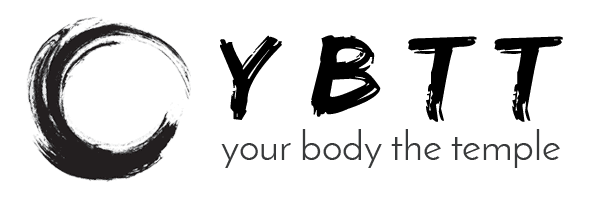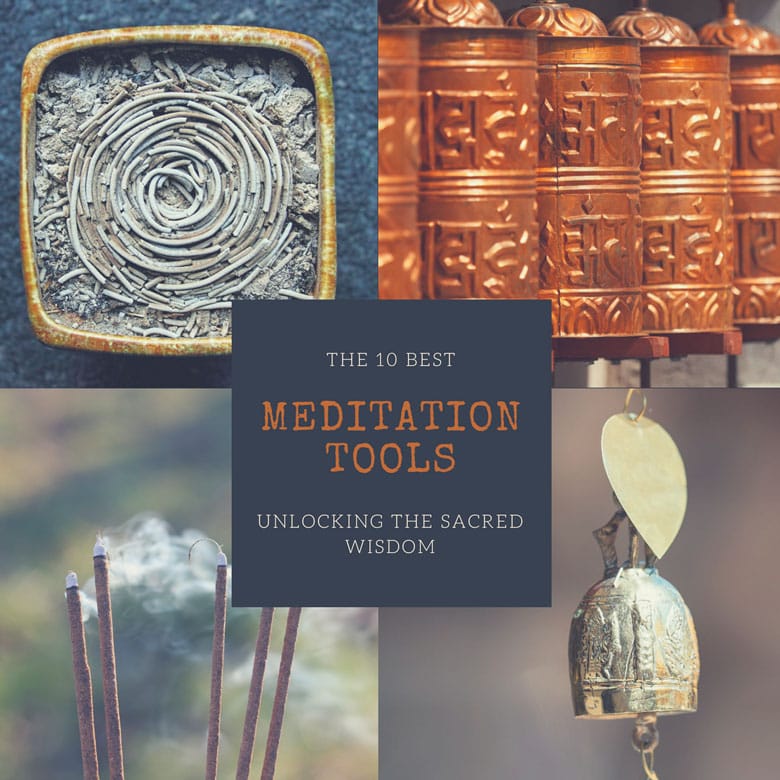
Meditation looks pretty simple in theory, doesn’t it?
If you’ve ever tried meditating or do so regularly, you’ll know first hand that it’s a lot more challenging than it first appears.
Maintaining a mindful connection with your breath and the present moment takes a lot of patience and commitment.
Luckily, there are a few things designed to make things a little easier for you.
Meditation tools help you calm your mind, maintain focus, and reduce physical discomforts (especially for prolonged sitting).
They’re easy to use and are beneficial whether you’re just starting out with your practice or a seasoned meditator.
Many of these ancient tools have been used for thousands of years and can offer tremendous insight.
These are the top 10 meditation tools I couldn’t live without.
What is meditation?
Meditation is the art, skill and practice of directing your attention to a single point of focus.
This focus can be your breath, a mantra, or a movement for example.
Although there is no specific date, researchers believe that people first began practicing meditation around 5,000 years ago. The first written accounts of the practice are found in Indian Vedic scripts dating back to around 1500 BCE. From these scripts emerged Taoist Chinese and Buddhist Indian meditation practices almost a millennia later.
Although meditation practices mostly emerged out of Eastern religions and spiritual practices, it’s often practiced in non-religious environments such as in clinical, classroom, and home settings.
Here, different forms of meditation such as mindfulness are practiced for a variety reasons including stress reduction, pain management and self-actualization.
Meditative practice is a way to quiet internal mental chatter. It helps to reduce anxiety, fears, and negative emotions. By helping you learn to become aware of the patterns of your mind, it helps you regain control of your emotions and actions.
Meditation has been found to be an effective complimentary treatment for medical conditions such as HIV, schizophrenia, cancer, chronic pain, and mood disorders.
What are meditation tools?
Let’s just clarify that you don’t need tools to practice meditation but they can make some things a little easier.
If you’re a beginner, you might find that any extra help getting started with your practice is extremely valuable.
Meditation tools aren’t modern inventions. Though some have evolved from their ancient form in terms of comfort, style, and fashion, many remain relatively unchanged.
Meditation tools are intended to help you maintain focus on your practice by reducing outside distractions. A comfortable seat for example can help you stay attentive on your breath instead of focusing on how much your knees are aching. It can also help you maintain proper posture and alignment, making it easier to take long deep breaths.
Other tools such as singing bowls serve as an auditory connection to your practice. The sound draws your attention back to the present moment and helps you connect with your breath or mantra.
There are so many different meditation tools available that sometimes people, especially beginner meditators, find it overwhelming. To help with this, I’ve provided a brief overview of some of the most popular tools, including their traditional and modern uses.
It’s my hope that these simple meditation tools help you foster a deeper connection with your practice and make meditation a lot more fun!
1. Meditation seats
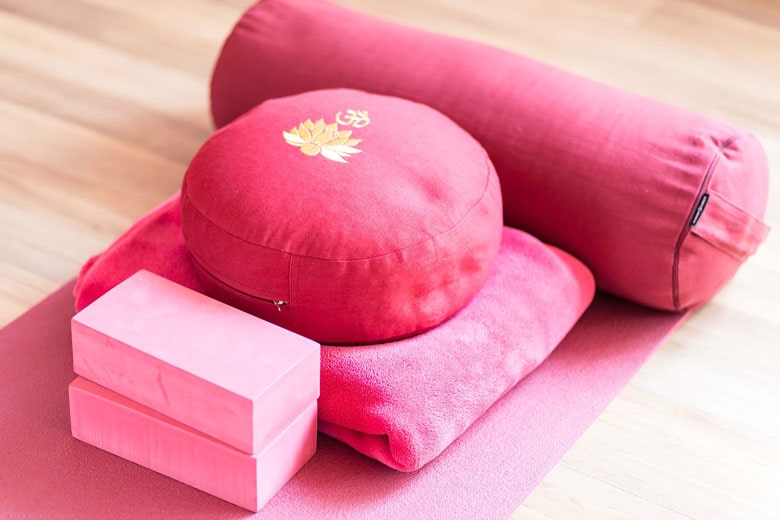
In the Buddhist tradition, zazen means seated meditation. If you aren’t accustomed to sitting for extended periods of time crosslegged, seiza or in variations of lotus position, these poses can become very uncomfortable. For some people, this kind of sitting can even be detrimental to your health.
It’s common for both beginner meditators and long-time practitioners to experience some form of discomfort while sitting for a long time in one position. Feelings of pins and needles caused by poor circulation in the lower extremities and knee pains are common complaints. Meditation seats are a way to overcome these challenges as they promote proper alignment and posture while reducing any strain in the body.
Meditation seats come in several forms such as cushions, wooden benches, zafus, zabutons, folded blankets and bolsters. These seats are a simple yet effective way to maintain focus during your meditative practice while limiting any physical discomfort associated with prolonged sitting and improving your posture.
2. Tibetan singing bowls
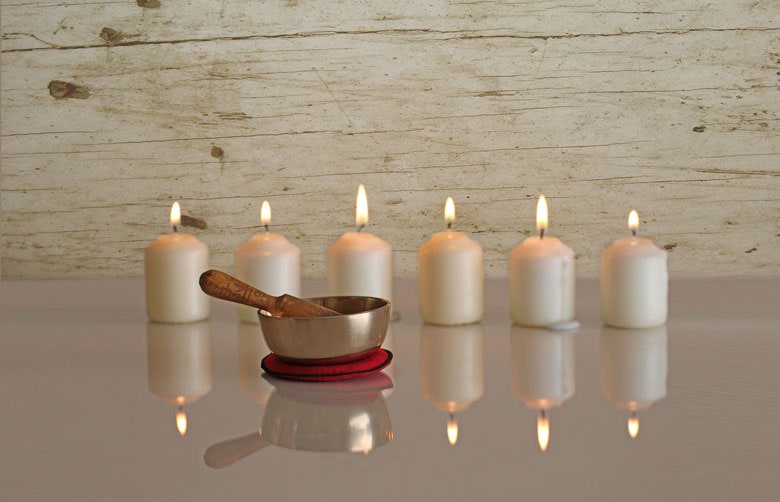
Singing bowls are a meditative tool used traditionally throughout Asia in a variety of religious rituals.
These specialized bowls have been employed for thousands of years for vibrational sound healing. They are known by a variety of different names such as Tibetan Singing Bowls, suzu gongs, or ring gong. These bowls are widely accepted as a simple way to deepen your meditative practice while realigning your energy and promoting health and wellness.
Singing bowls are considered to be part of a spiritually regenerative process bringing harmony to the mind, body, and spirit.
The practice of re-balancing is believed to promote healing at the cellular level. Recent studies from the University of Illinois for example have shown that low-intensity vibration may also be beneficial for healing wounds and also speed up patient recovery.
3. Meditation malas
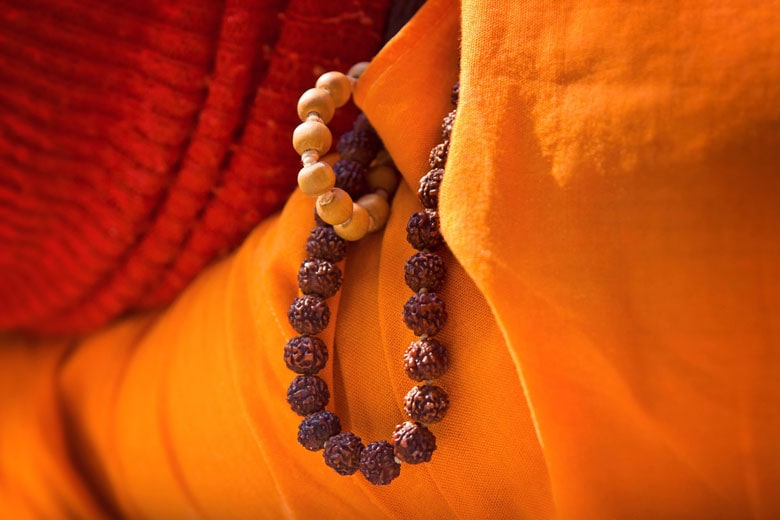
Malas are wearable meditation tools.
The most popular mala that we have come to recognize in the west consists of a necklace strand of 108 beads.
The beads are generally made from crystal, semi-precious and precious stones, wood (sandalwood or Bodhi), or seed. They often feature one larger bead (called a guru or meru bead) with two smaller beads or a tassel to follow.
The three end beads of the mala represent the completion of the mantra cycles and also holding the rest of the beads in place (1). These beads are used as a meditation tool to help count mantras.
In particular, the mantras for the 108 bead strand are focused on increasing your lifespan, understanding and virtue (2).
Wrist malas are another option, and are a popular choice amongst practitioners because they are much smaller than the necklace styles. They are often worn by Japanese and Tibetan Buddhist practitioners.
Long necklace style malas (the 108 bead constructs) are generally worn by priests. They are seen on statues and in paintings of religious icons in Hindu and Buddhist traditions.
In the Buddhist tradition for example, Avalokiteśvara is often depicted with a 108 bead mala and a lotus. Shiva, a deity of the Hindu faith is also often portrayed wearing several malas made from rudraksha fruit.
Prayer beads are now used for a variety of purposes. Whether to calm the mind during meditation, to count prayers, as a way to focus on breathing during meditative practice, to reduce stress and find grounding, to serve as our altar on-the-go, or simply to identify (fashionably) with our beliefs.
For some people, malas are a simple way to add personalized ritual to everyday life (3).
It is believed by many that the materials, particularly crystals and precious stones used in the malas hold healing and mystical properties.
4. Incense
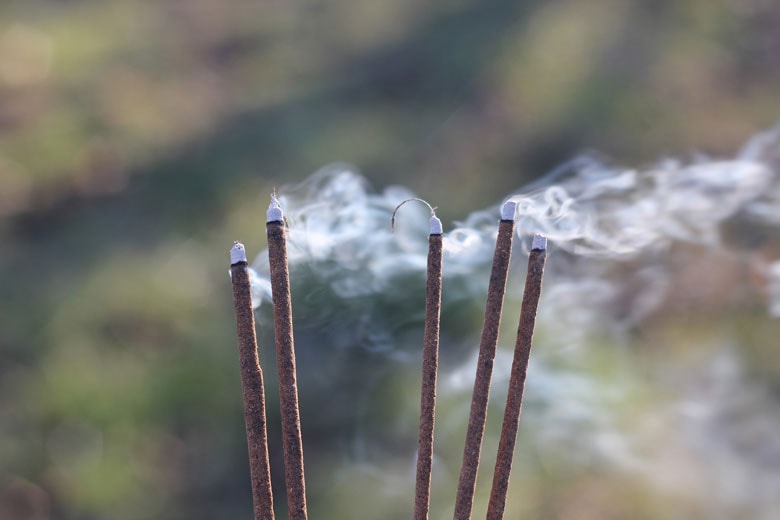
You probably never realized it, but incense (and candles too) are meditation tools.
Incense is found throughout centers of worship, in homes, and personal altars. The burning of incense is seen as an offering to both religious figures and also a way to clear a space of negative energy.
The lighting of incense is itself part of the meditative practice that is meant to help you direct your focus to this ritual and clear your thoughts (4).
Incense is made out of a combination of oils and spices and comes in a variety of scents. It’s prepared in many forms such as sticks, cones, and clumps.
The aromatic clumps are burned in large metal balls (that look like loose tea infusers) as they are much larger than the cones or sticks. The metal balls sway in the wind and are used for scenting large spaces. Incense sticks and cones are more common in personal practice.
There are also numerous kinds of incense holders. From basic dishes with sand, to plates, bowls, and more elaborate carvings and statues. In addition to religious and meditative practices, they’re also now commonly used in home décor and aromatherapy practices.
5. Mandalas

Mandalas are colorful geometric designs believed to promote wisdom and compassion. (They’re also beautiful meditation tools!)
It’s believed that deities exist within the mandala, and deep within the center of the symbol houses a primary deity.
During meditation, you are meant to focus on the mandala as a 3 dimensional palace that houses deities meant to provide tools for achieving enlightenment (5).
Mandalas are believed to possess ancient knowledge predating the cosmos and present the collective oneness of the universe (6). Used in meditation, mandalas are meant to help capture the mind and lead it from distraction so that it may turn instead towards higher consciousness.
Mandalas come in many shapes, forms, and colors. Some are even made of sand by monks who use specialized techniques to create elaborate artistic creations over the course of several days. Throughout the process, the monks chant, meditate, and upon finalizing the design, they sweep the creation into flowing water.
This action symbolizes both the impermanence of life and is also believed to help share the mandala’s blessings with others.
If you’re one of the people who have sharpened their pencil crayons from your own school days to start sketching in mandala coloring books, try to set an intention before you start the process.
Clear your mind and choose the colors and patterns that appeal to you and start bringing the design to life. Leave all judgment aside and enjoy the freedom of your creative expression (7).
6. Zen Gardens
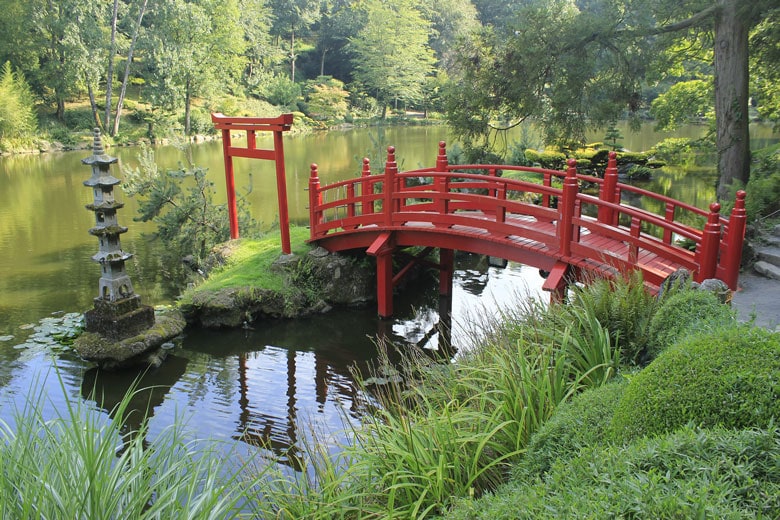
Japanese Zen gardens are stunning landscaped creations that are used in meditation to promote contemplation, self-reflection and beautification.
True to Zen practice, Japanese gardens inspire mindful meditative practice through their simplicity and minimalistic design.
It’s believed that in these sacred spaces, the gardener and nature become one. The gardens become a place with individuals can witness first hand the “fusion of nature and art”.
The actual creation of a Zen garden as well as its maintenance and observation are all meditative practices.
For those who don’t have the time or space to manage an outdoor garden, smaller indoor options are available, and can be kept on desks or tables and used as meditation tools.
7. Yoga blankets
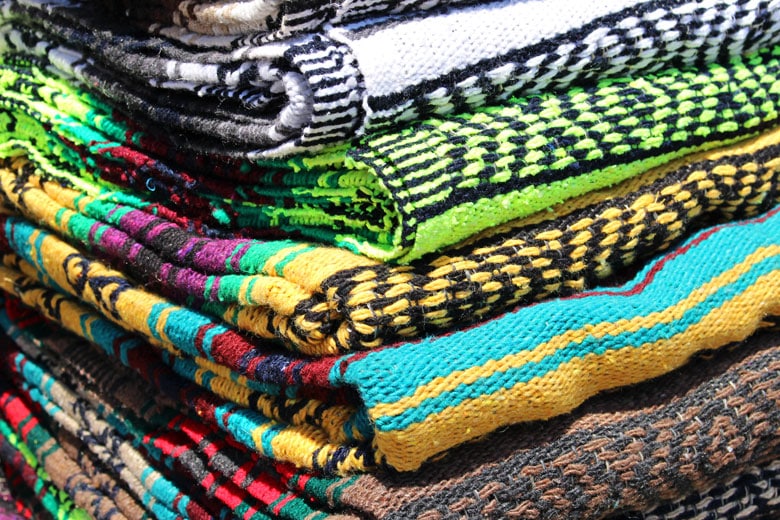
Long before the days of athletisure brands and pricey skin tight leggings came the Indian Sanskrit texts known as the Vedas. It’s from these sacred texts that yoga as we’ve come to know it now emerged.
It was almost 2,000 years ago when the Indian sage Patanjali took these ancient teachings and transcribed it into The Yoga Sutras (8). This collective yogic text has become a popular philosophical guidebook for 20th century yogis wishing to explore elements of yogic practice such as meditation and postures.
The rise of popularity of yoga in America is partially due to the increased recognition and interest in its biomedical and therapeutic benefits (9).
Yoga is now prescribed as a complementary treatment for people suffering from stress, anxiety, depression and might offer benefit to people suffering from chronic illnesses such as cancer (10) and eating disorders (11).
There are now many props available for yoga practitioners to help deepen their practice, improve posture, and find deeper relaxation.
Yoga blankets (also known as Mexican yoga blankets) for example are a simple and cost effective tool to help improve comfort, reduce pain, and encourage better alignment in various yoga postures as well as during seated meditation.
8. Meditation shawl
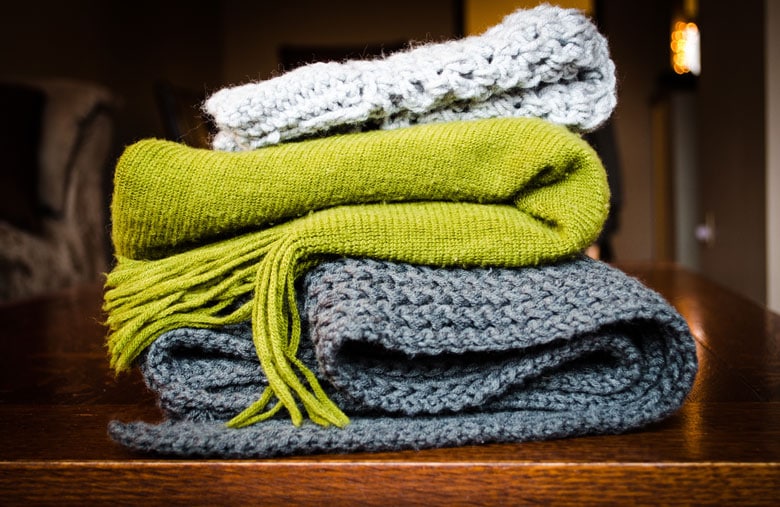
In Tibet, it is customary to present khatas or long scarves at ceremonies and celebrations. These large shawls are also used to show gratitude when given as a gift.
Generally white or gold, they are usually quite long and made of silk or cotton. Woven into the fabric are Buddhist mantras and auspicious symbols* (12).
Khatas, although appearing like simple pieces of textile have a very special protocol for how they are to be gifted and received. Even the specific folding of the khata has its own significance.
In the west, khatas or long scarves have made their way into meditative practices as a form of shawl. Here they come in a variety of shapes, colors, and textiles such as cotton or wool.
For prolonged practice, many practitioners find added comfort and warmth in the soft material and wrap it around them much like a monk’s robes. These items have also become trendy fashionable accessories.
[*Auspicious symbols are sacred symbols used for divine teaching and ceremonies. There are 8 auspicious symbols in the traditional Tibetan tradition (ashtamangala): the endless knot, the lotus, a pair of gold fish, the conch, a jewelled parasol, a vase, the dharma chakra and a victory banner (13).]
9. Meditation bells
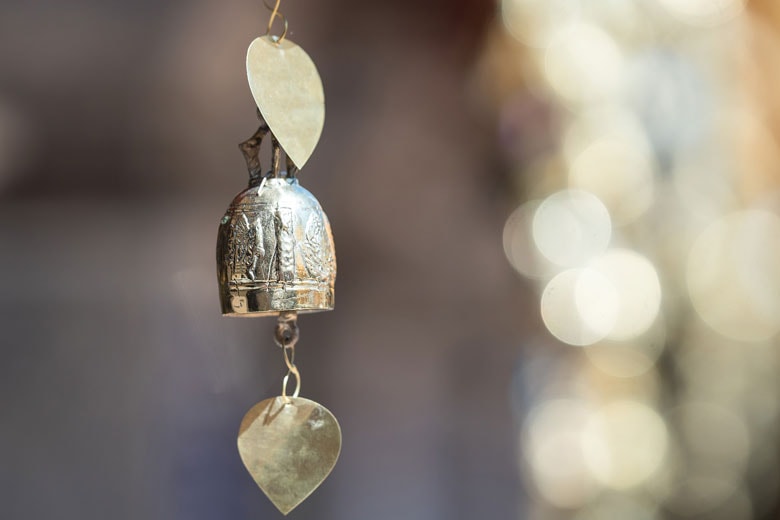
Meditation bells are another auditory tool meant to help you become more mindful and aware of the present moment (14).
Whether they’re small hand held bells for home practice or large bells in the monastery, they are another mindful technique used to help direct focus and attention.
Keeping up with technological advances, meditation bells have found their way onto cell phones and computers where they can be programmed for routine practice. A single bell sound can be a powerful reminder to bring your attention to your breathing and recenter.
In the process, you learn to control your attention and become more aware of what you are doing or saying. After a few deep breaths with the bell, you can return to the task at hand with a clear mind.
10. Prayer wheel
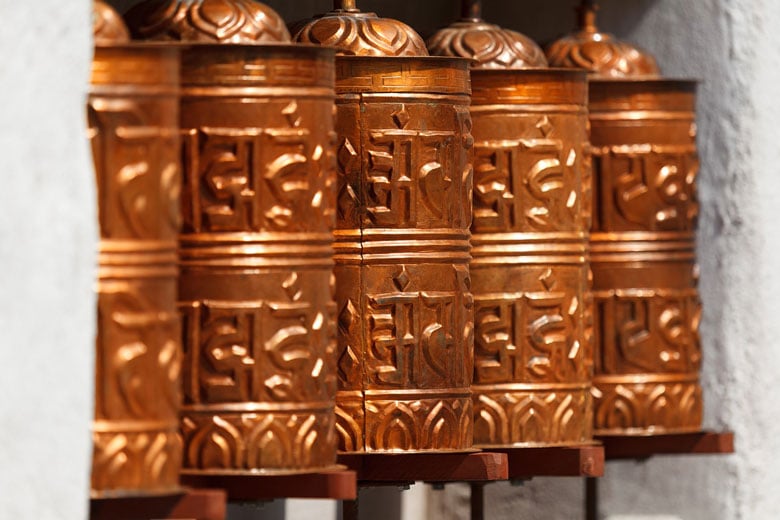
Prayer wheels are either handheld or fixed objects consisting of a cylinder (generally made out of a metallic alloy) and a handle (alloy or wood).
The handle acts as the axis around which the cylinder spins. Inside of the cylinder is a rolled scripture that contains a Buddhist prayer or mantra (15).
The most common mantra found inside the prayer wheel is “Om Mani Padme Hum”. In Sanskrit it represents the mantra of Avalokiteśvara (the Buddhist bodhisattva of compassion), and in Tibetan, the mantra of Chenrezig. It’s believed that by spinning a prayer wheel that contains this mantra, the effects are twice as powerful than when it’s recited in speech.
The history of Tibetan wheels remains somewhat of a mystery. It’s assumed that smaller hand-held prayer wheels were created for meditative practice after being modelled from large revolving bookcases in Chinese Buddhist Monasteries (16). The smaller handheld devices with their internal ball and chain mechanics are believed to be a Tibetan invention created for personal practice (17).
Handheld prayer wheels are used as part of a traditional practice involving visualizations and the recitation of mantras. It’s believed that the spinning of the wheel with great intention will remove obstacles to enlightenment leading towards liberation promoting healing, blessings, and compassion (18).
Specifics for the kind of wood used for the central axis, the inks used to inscribe the mantras, as well as the mantras themselves.
Take away
Science and modern medicine continue to show that meditation is beneficial for mind, body and soul.
Learning to become more present and grounded can help to make daily stresses much more manageable.
Meditation tools are a simple and affordable way to help you better focus on your practice. Whether by improving your posture, adding comfort, or helping you better direct your attention, they hold ancient wisdom that have helped meditators focus on their practice for over a millennia.
Have you ever tried using meditation tools?
Are there any you’ve found to be particularly beneficial or useful in your practice?
I’d love to hear if you have any tools or tricks to help with make meditation a little easier, especially for all the newbies out there!
